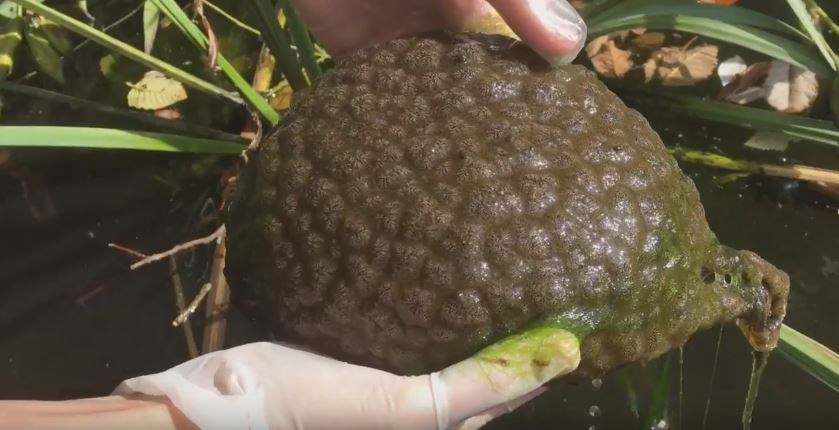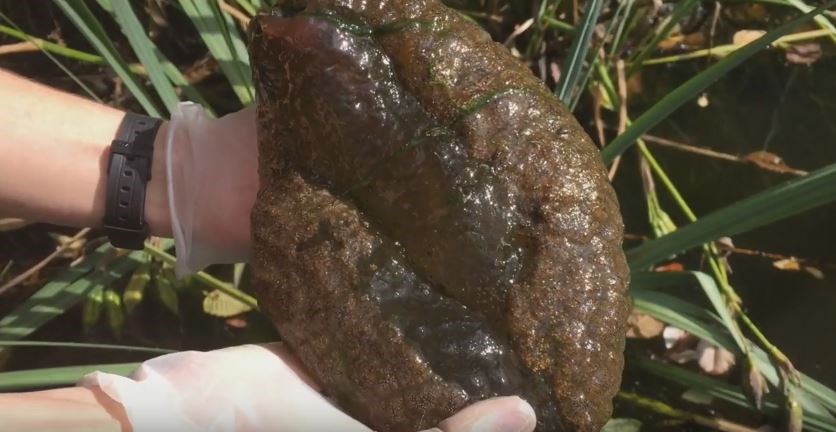A big blob of gooeyness is causing a lot of excitement in Stanley Park.
Known in Latin as Pectinatella magnifica, it’s okay if you call the bryozoan found in a pond near Lost Lagoon by its less formal name — a “chunk of goo.”
Or at least that’s how Kathleen Stormont of the Stanley Park Ecology Society describes the bryozoans that were discovered a couple of weeks ago in the biofiltration pond a few metres away from the causeway.
“It’s kind of like three-day-old Jello — a bit firm but gelatinous,” she says.
If you don’t want to be freaked out, think of it as a peeled giant lychee fruit that can grow to the size of a deflated basketball. For those who aren’t queasy, let your thoughts turn to what a brain or kidney might look like if it had evolved under water.
Only one scientific journal mentions bryozoan found in British Columbia, and that was in the Gulf Islands, the society says. More recently, a byrozoan was chanced upon in Lake Okanagan.
“They’re a colony of tiny organisms that like to hang out together,” Stormont says. “They have a very ancient lineage that hasn’t changed for hundreds of thousands of years.”
A single organism on its own is easy prey. Stick together and you’re not as likely to be eaten. “If you have a predator there’s safety in numbers,” she says.
Someone “stumbled upon” a bryozoan in the pond during a recent 24-hour Bio-Blitz, when a mass of amateur nature lovers helped a group of experts catalogue all manner of species living in the park.
“We looked at things we don’t normally look at,” says Celina Starnes, the ecology society’s public education and outreach manager.
Bryozoans are hard to spot because they are camouflaged in the murky water.
Once one was noticed, however, the pond was found to be full of them.

Starnes says byrozoans are fresh-water animals that are believed to have originated in the Mississippi. They’ve been migrating westward ever since.
The biofiltration pond is obviously a perfect habitat for them. It was created a dozen years ago to filter the pollutants found in the runoff from the traffic-congested causeway before they hit Lost Lagoon.
“What the byrozoans like is that there is little to no current and high nutrient levels,” she says.
Another fun find during the Bio-Blitz was goblin moss. “It looks like any old moss until you turn the lights off,” Starnes says. “It has a green luminescence.”
Stormont says the discovery of the bryozoan has been “a great education for us. There are these weird and wonderful things that exist and aren't commonly encountered.”
The results from the Bio-Blast, which was part of the Canada 150 celebration, will be uploaded to the iNaturalist.org database.



